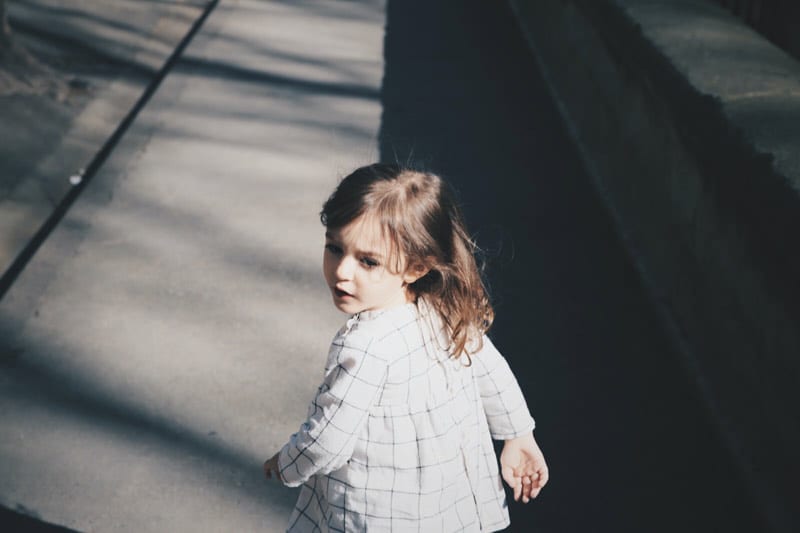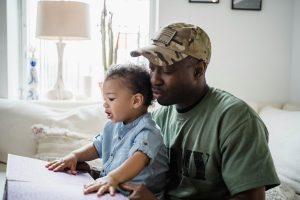Detection of Anxiety Disorders in a Child
All children are afraid of something. If the feeling of fear passes quickly, there is nothing wrong with it. But when it lasts for some time, interfering with all aspects of life, parents need to give close attention to it. Detecting anxiety disorders at an early stage is crucial. In this article, you will learn about the most widespread anxiety disorders in children and the signs and symptoms.
The Most Frequent Causes of Worrying in Children
Since children are concerned with adapting to the world around them, they often experience a feeling of worrying. The first day at school, a new environment, moving to another location, or trying something new may cause a nervous state in kids. That is normal and common for many children. And it passes by itself as soon as a child finishes the challenging task or gains the life lesson from the new experience. Parents serve as guardians for their children and can help them handle the situation.
The common causes of worrying in children that do not require medical intervention include:
- the period from the seventh-ninth month of birth up to three years old;
- lightning, darkness, insects, reptiles, and other unpleasant or unknown objects up to school age;
- new social environments.
However, when a stressful state appears in your child for other reasons, it requires more attention. An extreme feeling of fear and worrying, which affects general behavior, routines, appetite, or mood, is a red flag to focus on mental health. These signs may be symptoms of anxiety in children and are a reason to apply for the help of a pediatric health care provider or mental health specialist.
Signs of Anxiety in Kids
During an episode of anxiety, a person experiences a release of chemicals in the body that affect the workings of the heart, stomach, breath, and musculoskeletal systems. Let’s look in detail at the signs of anxiety in a child:
- incontinence or bed-wetting;
- emotional outbursts: anger, tantrums, being clingy, crying fits;
- digestive disorders;
- frequent headaches;
- negative thinking and sudden fear or panic;
- increased or decreased appetite;
- poor concentration;
- a feeling of insignificance
- hoarding;
- troubled sleep, insomnia, sleepwalking;
- rejection of school and other social establishments;
- retreat from the world;
- muscle tension;
- nervous habits: biting nails, pulling hair, chewing on pencils, etc.;
- agitation;
- fatigue;
- dry mouth;
- racing heartbeat.
All these signs are the body’s reaction to threats of danger. The frequency of anxiety symptoms in children may vary depending on the nature of their anxiety. Some of them arise only in some situations as a result of triggering events or objects. Others may appear more often. These may happen even without a real presence of danger, interfering with the child’s normal activities such as play and studying.
Parents should note all the signs and symptoms of anxiety when seeking medical help for a child with anxiety. To determine the type of anxiety and make the correct diagnosis, the contributing factors matter. For instance, when the signs appear (e.g., before or after school), how a child reacts in different dangerous situations, what you do to help your child deal with the anxiety, etc.
Types of Anxiety Disorders
Anxiety is a common symptom of numerous mental health disorders that may occur in children. Among them are:
- Generalized anxiety disorder (GAD.) Children with GAD have uncommon worry about ordinary things, such as going to school, birthday parties, playtime, or riding public transportation. They often experience troubles in learning and cannot relax and enjoy their childhood. Kids may not tell parents about their fears yet worry much about events in the future.
- Panic attacks. These have become more frequent in children during the last decade. In addition to the intense feeling of fear, kids suffer from associated symptoms, such as chest pain, vertigo, short breath, sickness, excessive sweat, shivers, hot flashes, and increased heart rate.
- Obsessive-compulsive disorder (OCD.) A lack of serotonin in kids with OCD leads to obsessions about certain things, doing something wrong, and negative thoughts about illnesses or death. These thoughts make them check everything numerous times, wash or clean something extensively, experience the “must-do” feeling to get rid of the upsetting sensations.
- Selective mutism (SM). SM is common for children who only communicate with those closest to them, avoiding any interaction with strangers. The outer environment makes them feel anxious. They are very shy and withdrawn in a group of people.
- Specific phobias. These relate to ordinary objects or situations that many children are afraid of but taken to an extreme extent. Phobia makes children avoid triggering events or objects, evoking the desire to escape. Children with specific phobias are often tearful or afraid, clinging to their parents.
- Separation anxiety. All babies and small children feel anxious when parents leave them, but they get used to the presence of their close relatives or baby sitter. When this state continues in older children who cannot be left without their parents or stay away from home, it can be a sign of separation anxiety disorder. These children may reject normal daily activities and sleep poorly without their parents near.
Any child anxiety symptom listed above is a matter for discussion with a mental health care provider.
Treatment of Anxiety in Children
Since children spend much time with family members, it is natural to ask, Is anxiety learned from parents? Partly, yes. If a child grows up among those who behave anxiously, this coping style can get passed on to the youngest family members. However, anxiety symptoms can also appear in children due to genetics, chemical imbalances, or stressful life situations.
Only a skilled therapist can determine the genuine reason and provide a correct diagnosis. During the visit, a therapist, doctor, or clinician will ask your child about the worrying problems. The medical part of the treatment will address the accompanying symptoms in different body systems. Parents should be present to help children between appointments, encouraging them to face their fears, have better self-understanding, and take steps to overcome the problem.
If you or someone you know experiences mental health issues, it is important to seek help from a qualified professional. Our Resource Specialist can help you find expert mental health resources to recover in your community. Contact us now for more information on this free service to our users.

Photo by Caroline Hernandez on Unsplash
The opinions and views expressed in any guest blog post do not necessarily reflect those of www.rtor.org or its sponsor, Laurel House, Inc. The author and www.rtor.org have no affiliations with any products or services mentioned in the article or linked to therein. Guest Authors may have affiliations to products mentioned or linked to in their author bios.
Recommended for You
- Veterans and Addiction Recovery: How Families Can Support Their Service Member’s Healing Journey - July 14, 2025
- Trauma-Aware Yoga: A Gentle Path to Healing and Recovery - July 10, 2025
- Why Eating Disorders in Men Are Often Missed - July 3, 2025





